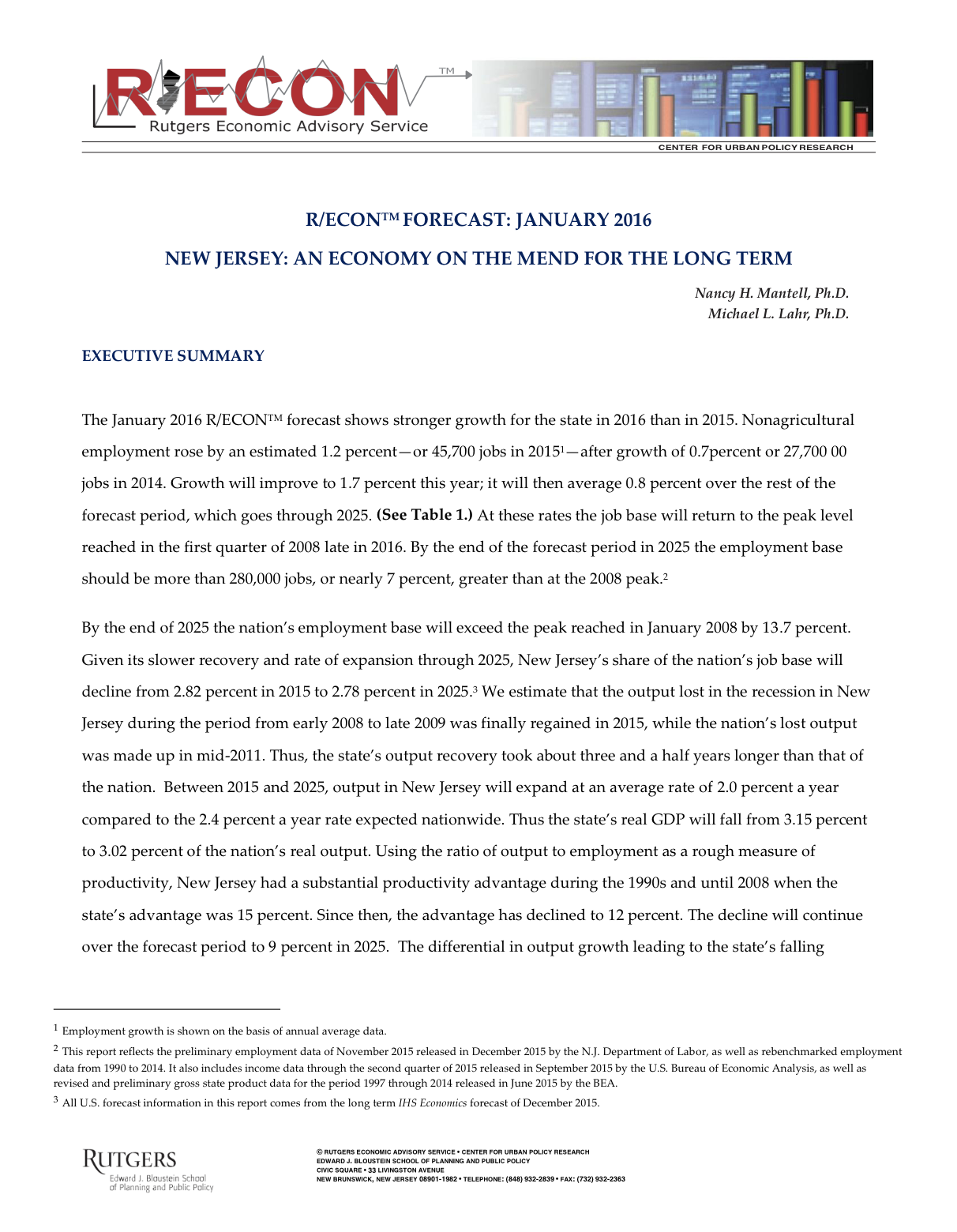The January 2016 R/ECON forecast shows stronger growth for the state in 2016 than in 2015. Nonagricultural employment rose by an estimated 1.2 percent—or 45,700 jobs in 20151—after growth of 0.7percent or 27,700 00 jobs in 2014. Growth will improve to 1.7 percent this year; it will then average 0.8 percent over the rest of the forecast period, which goes through 2025. At these rates the job base will return to the peak level reached in the first quarter of 2008 late in 2016. By the end of the forecast period in 2025 the employment base should be more than 280,000 jobs, or nearly 7 percent, greater than at the 2008 peak.
By the end of 2025 the nation’s employment base will exceed the peak reached in January 2008 by 13.7 percent. Given its slower recovery and rate of expansion through 2025, New Jersey’s share of the nation’s job base will decline from 2.82 percent in 2015 to 2.78 percent in 2025.3 We estimate that the output lost in the recession in New Jersey during the period from early 2008 to late 2009 was finally regained in 2015, while the nation’s lost output was made up in mid-2011. Thus, the state’s output recovery took about three and a half years longer than that of the nation. Between 2015 and 2025, output in New Jersey will expand at an average rate of 2.0 percent a year compared to the 2.4 percent a year rate expected nationwide. Thus the state’s real GDP will fall from 3.15 percent to 3.02 percent of the nation’s real output. Using the ratio of output to employment as a rough measure of productivity, New Jersey had a substantial productivity advantage during the 1990s and until 2008 when the state’s advantage was 15 percent. Since then, the advantage has declined to 12 percent. The decline will continue over the forecast period to 9 percent in 2025. The differential in output growth leading to the state’s falling productivity advantage has been due to and will result from, among other things, the relatively higher costs of living and doing business in New Jersey, the state’s lower rate of population growth, and its smaller proportion of working age population.
